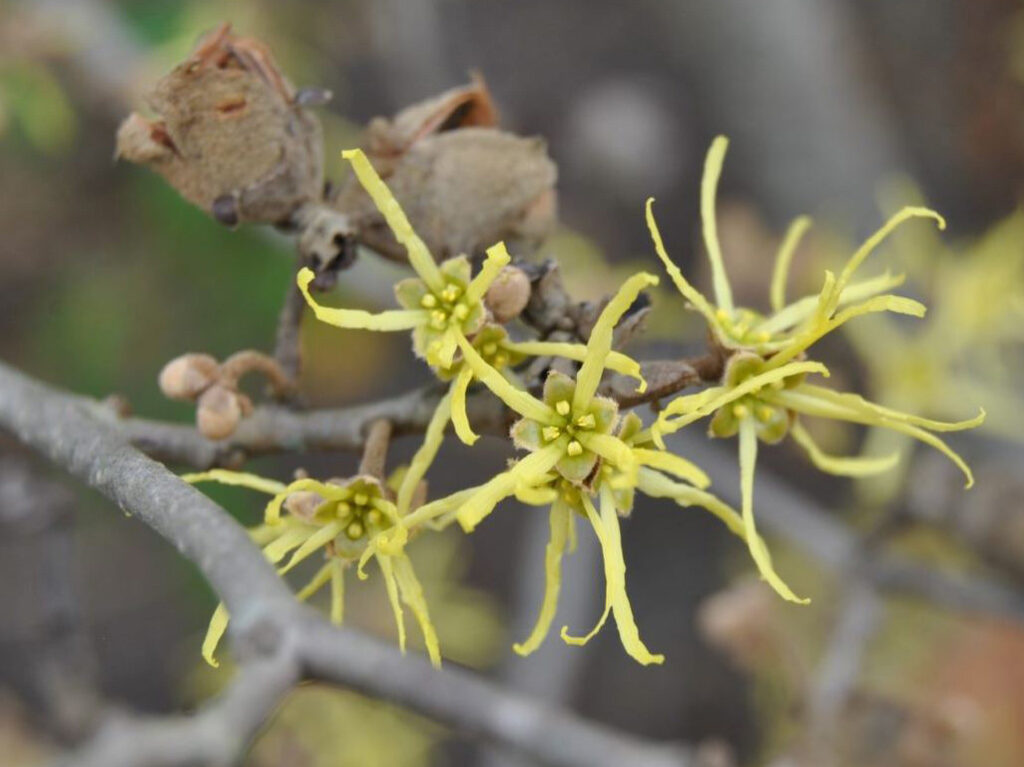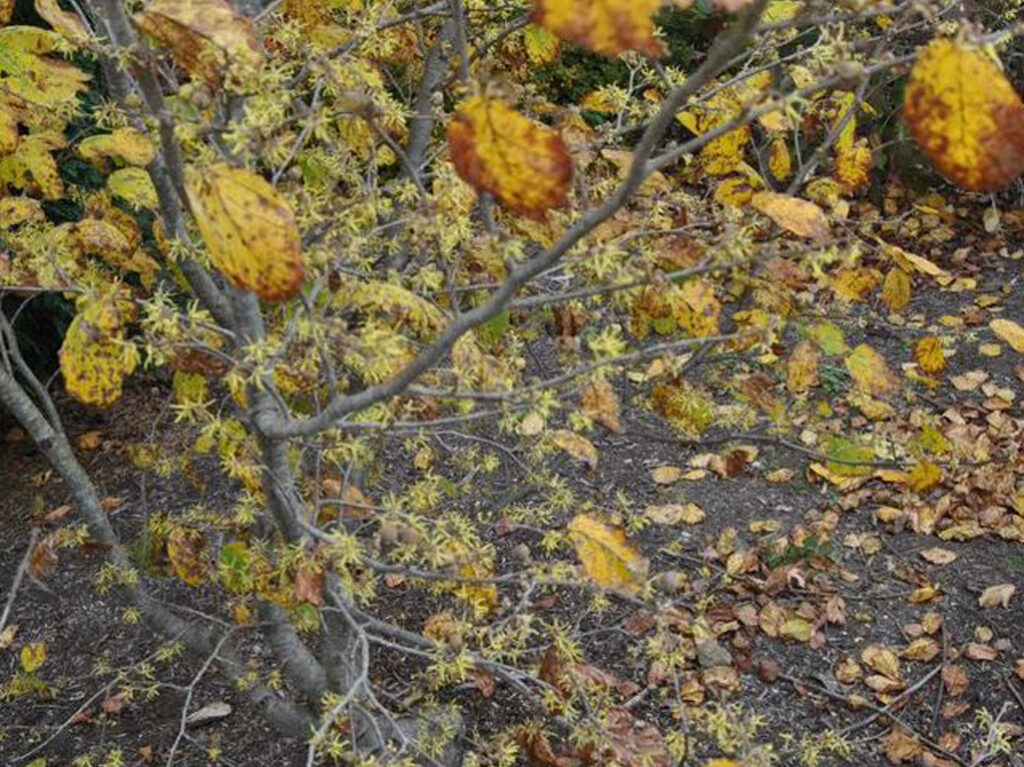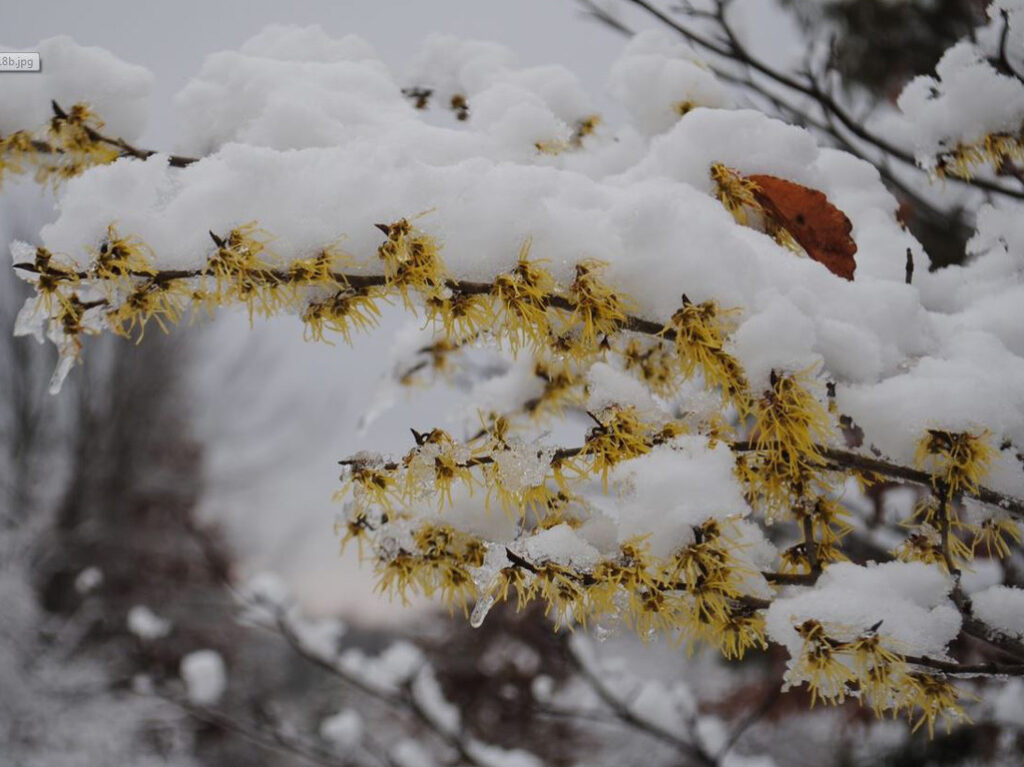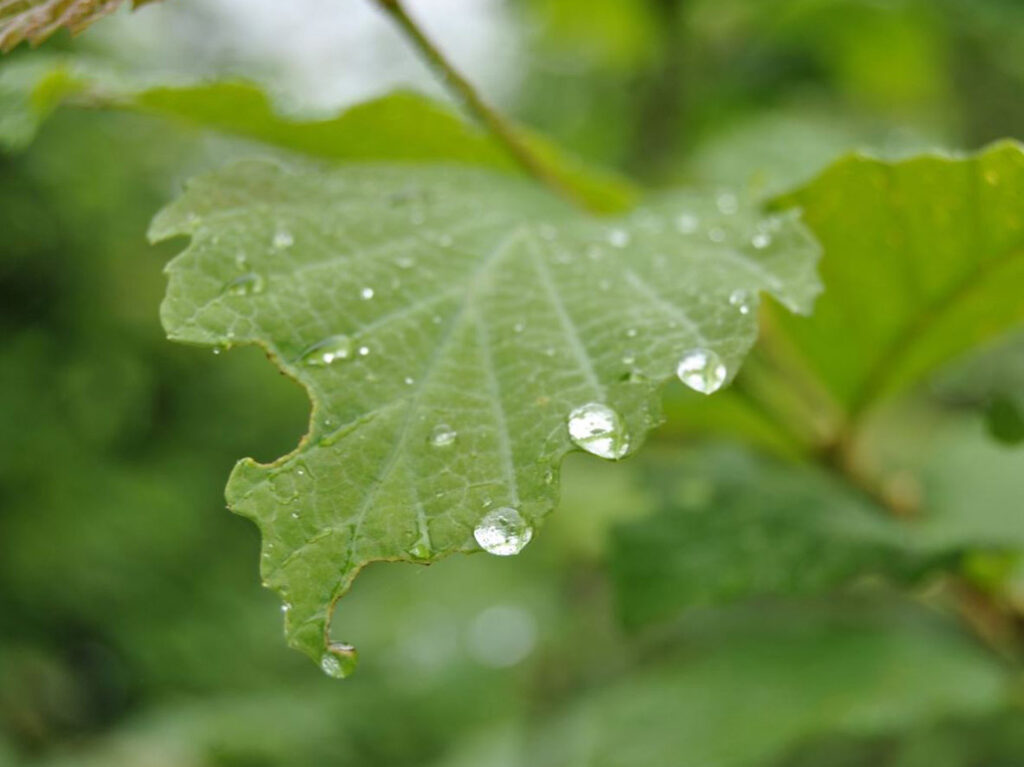
Hamamelis virginiana
Common Name
Common or American Witch-hazel
Family
Hamamelidaceae (Witch-hazel)
Tree or plant type / form
Upright, vase-shaped or rounded deciduous shrub or small tree
Landscape Use
Specimen plant or understory component of a woodland or naturalized landscape
Season of interest and/or other ornamental feature(s)
The leaves turn attractive shades of yellow in autumn, peculiar spider-like yellow flowers appear from mid fall to early winter and are particularly attractive after leaf drop
Size at Landscape Maturity
Height: 8 to 10 feet, Spread: 6 to 8 feet in 10 years; can eventually reach 15 to 20 feet tall and 10 to 15 feet wide or larger
Light exposure
Full sun to fairly deep shade; typically found as an understory plant in shady woodlands
USDA Hardiness zones
3 – 8
Origin / Native locale
Eastern North America
Wildlife Value (incl. pollinators)
Birds; serves as a late season nectar source for flies, small bees, and moths
Soil Type & Drainage
Moist, well-drained soil
Tolerances
Intolerant of drought, but it does tolerate heavy clay soil, deer browse, alkaline soil, road salt, and shade
Leaf Description
Oval to obovate, medium to dark green leaves (to 6” long) with dentate to wavy margins turn bright yellow in fall.
Bloom Time in Northeast Ohio
Mid October to Early December
Flower Description
Fragrant yellow sometimes tinged with orange or red
Cone / Fruit
The fruit capsules mature one year after flowering and split open to forcefully expel the seeds
Available at
Secrest Arboretum Plant Discovery Days and selected local nurseries
Use the Secrest Aboretum Explorer to find locations where this plant is located on the Wooster campus.





